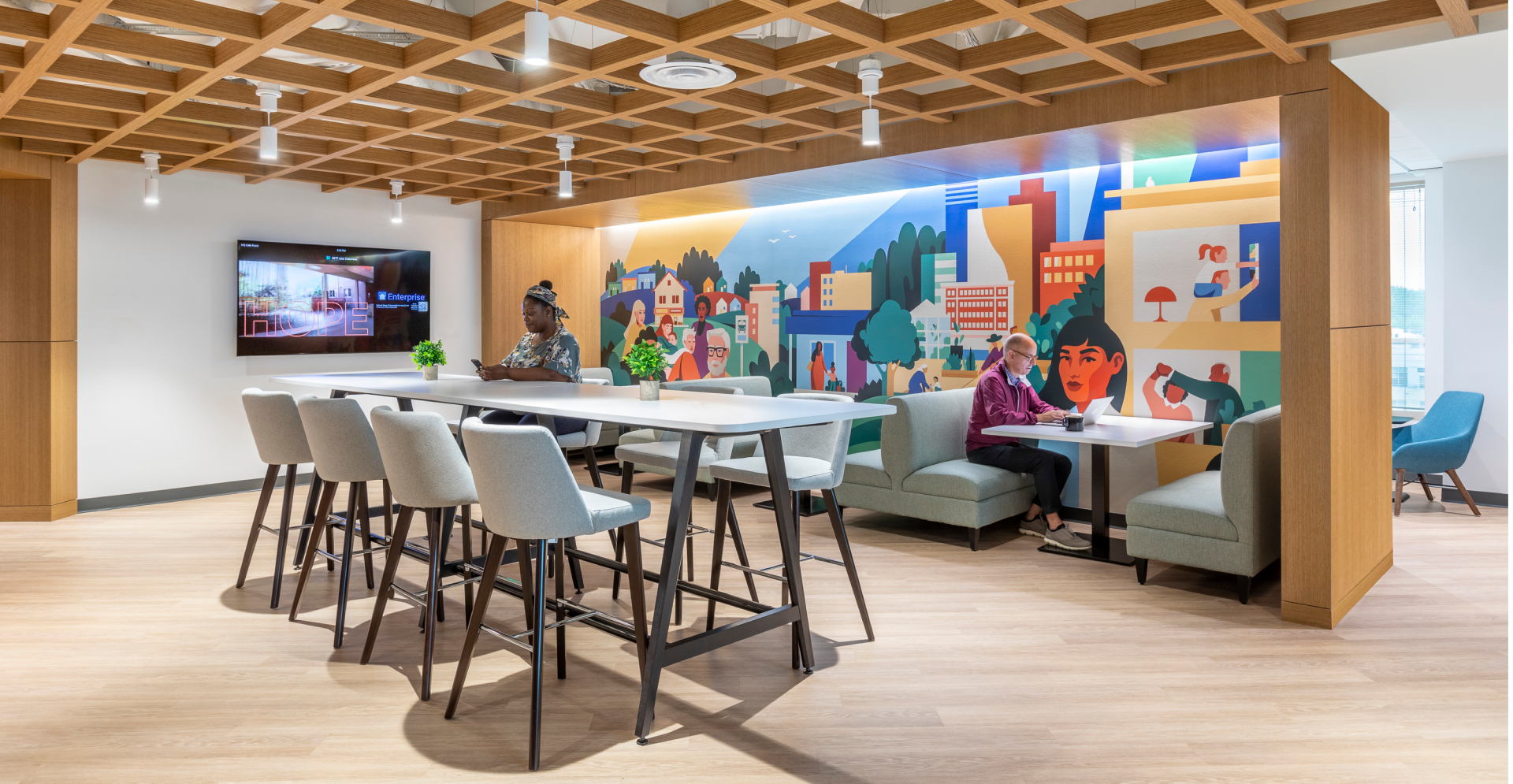The equalizer, the incubator, the culture center, and the showroom.
The role of the office will continue to be in flux across the next year as companies and their employees negotiate the best approach to work. In 2022, the office served more so as an occasional destination for most people. Now, companies like Google are requiring their staff to return to in-office work as part of an effort to preserve social capital, or the connections and trust between people that, they believe, allows them to work most effectively.
As company policies, technology, and the built environment are shifting in accordance with our new ways of working, so too are individuals. With a few years of remote work under their belts, people are now mixing and matching the ideal home and work balance that is best for them. Residential properties are following suit by offering more robust workspaces for tenants, fit with the technology and community spaces that the traditional office previously provided. Read more about this here. The office should not try to compete with the evolution of our homes but consider how it can be a partner to them by implementing lessons learned over the past couple of years and reimagining itself as a key part of our social fabric. With the tools that employees need to work available at home, people will need to see a purpose for coming into the office. The first is framing the office as an equalizer. For those who are not required to come in, the office can remain appealing by offering what they cannot get at home. Though leadership and some employees might be able to work in separate offices and libraries that offer the privacy and focus space they need, there are many employees who are stuck working in studio apartments or at home with their kids. The inequities of workspace at home, such as fast internet, ergonomic workstations, and even the ability to form relationships with other people in the company, can be solved with democratic workspaces.

Similarly, the office increases access to critical internal departments. One of the primary concerns with at-home work is the lack of easy communication with leadership as well as other team members. Design can offer spaces that foster these interactions and encourage people to come in and use them, offering private, comfortable, and safe spaces for important conversations or open and engaging spaces for collaboration across the company.
62% of workers say that they are more productive when working remotely. Rather than creating an office for people to put in hours of focus work, the office can become an incubator that gives people space to connect, collaborate, and ideate. It will leave behind a toxic culture of long isolated desk hours and instead create space for workshopping, making, testing, and optimizing. In this way, onboarding, training, and IT support sessions are not a chore but elevated exercises set in engaging, technology-driven labs.
Though remote work has proven to be effective, aspects of on-the-job training, mentoring, feedback, and upskilling are best delivered in person. The office thus serves as a cultural epicenter that is shaped by a brand experience, much like retail environments, for employees and clients. The mission, vision, and values of a company can be illustrated through design and technology and lived through the work and collaboration of employees. The office is a place where teams and peers can gather, not just to work but to break bread, debrief, and grow together.
Finally, the office can take on the role of the experience center or showcase. In other words, a tool for talent and client recruitment that allows people to fully engage with the experience of the company. Entering the office should feel like becoming part of something larger. In this way, the new office can offer what employers have been trying to entice employees with all along—social and business connectivity. These interactions extend beyond talent and clients to include people from the surrounding community in public-facing spaces or innovation hubs created through partnerships with universities.
In the race for quality office spaces, many will be faced with the challenge of low supply. Building a new office space comes with high expectations and more of a hospitality feel to them. People expect a concierge, places to eat and drink, and amenities like gyms and rooftop patios. These perks, however, come with a price. There are a few quick, cost-effective wins to retrofit a building and bring it up to par. For the next year, the focus will be on flexibility, and how it can creatively offer people the multiplicity of work environments they seek.
There are a few practical approaches that offices can take to create a successful work environment. Design should explore how offices can offer open space for collaboration while minimizing distraction. There is a way in which spaces can contribute to some of the physical and mental challenges we face at work. These include headaches, eye discomfort, irritability, and a lack of privacy, all of which can be alleviated with bright day lit spaces, biophilic elements like indoor plants, and views of the outside world. Many of these initiatives fit together with sustainable strategies, like carbon offsetting, which are becoming increasingly important to employees.





